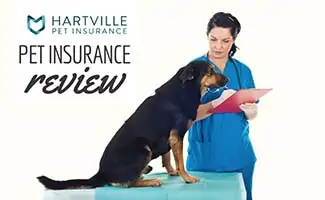Healthy Paws vs ASPCA Pet Health Insurance: The Key Differences They Don’t Advertise
When you purchase through links on our site, we may earn a commission. Here’s how it works.

Choosing the right pet insurance can feel like navigating a maze—especially when comparing two major providers like Healthy Paws and ASPCA Pet Health Insurance. Both offer accident and illness coverage, but the differences in payout limits, waiting periods, coverage options, and claim processing times could significantly impact your experience. Would you prefer unlimited payouts with faster reimbursements or a plan with wellness coverage and more flexibility? These choices matter when unexpected vet bills arise.
Table of Contents
In this deep dive, we’ll uncover the key strengths and limitations of each provider, from how long it really takes to get reimbursed to what coverage gaps could leave you paying out of pocket. Whether you’re looking for the best value, most comprehensive coverage, or the smoothest claims experience, this comparison will help you decide which plan is the perfect fit for you and your pet.
†Pets enrolled after their 6th birthday for Healthy Paws have plan customization restrictions, and hip dysplasia is excluded.
††Healthy Paws will not enroll pets older than 4 years old in NY.
Coverage Comparison

Healthy Paws and ASPCA Pet Health Insurance both offer a single accident and illness pet insurance policy available in all 50 states. Both plans cover new accidents and illnesses, including testing and treatment for various conditions. Coverage includes emergency care, surgery, hospitalization, specialized exams, specialty care, X-rays, blood tests, ultrasounds, CT scans, MRIs, rehabilitation, cancer, chronic conditions, hereditary and congenital conditions, prescription medications, and more.
However, neither insurer covers endodontic disease, gum disease, holistic treatment, pre-existing conditions, pregnancy, breeding, or elective cosmetic procedures (e.g., tail docking, dew claw removal, ear cropping).
Both Healthy Paws and ASPCA provide coverage for conditions such as cancer, hip dysplasia, allergies, and canine cruciate ligament (CCL) tears; however, pre-existing conditions are generally excluded. ASPCA offers coverage for curable pre-existing conditions that have been symptom- and treatment-free for 180 days, except for ligament and knee conditions, which remain excluded. Healthy Paws does not provide coverage for curable pre-existing conditions.
Regarding waiting periods, Healthy Paws has a 15-day waiting period for accidents and illnesses, with a 1-year waiting period for hip dysplasia (coverage is excluded for pets enrolled after their 6th birthday). ASPCA has a 14-day waiting period for both illnesses and accidents and does not impose an extended waiting period for hip dysplasia.
Both insurers cover non-routine dental treatment, including tooth extractions and trauma to teeth, face, and jaw. However, Healthy Paws only covers tooth extractions if they are the result of an accident.
ASPCA also offers optional wellness plans that cover routine care such as annual exams, vaccines, dental cleanings, flea/tick/heartworm prevention, blood tests, urinalysis, and fecal tests. These plans allow pet owners to include preventive care in their coverage. Healthy Paws does not offer routine care coverage.
†Healthy Paws only offers hip dysplasia coverage to dogs enrolled before the age of six.
Premiums & Pricing

Insurance providers determine premiums based on factors like your pet’s age, breed, location, and the coverage level you select. Comparing Healthy Paws and ASPCA quotes can be challenging due to their differing coverage structures. Healthy Paws offers unlimited payout caps for all policies, while ASPCA provides payout options ranging from $2,500 to $10,000. Additionally, Healthy Paws’ deductible and reimbursement rate options may be limited based on the pet, whereas ASPCA offers a consistent range of options for the sample pets in this comparison.
With Healthy Paws’ unlimited payouts, policyholders don’t have to worry about reaching a maximum reimbursement limit. However, plan customization—such as reimbursement percentages—may be more restricted based on the pet’s details. In contrast, ASPCA allows pet owners to choose from multiple payout options, offering greater flexibility to balance coverage and affordability. That said, ASPCA’s payout caps max out at $10,000, meaning pet owners could face out-of-pocket costs if their veterinary expenses exceed this limit.
Both Healthy Paws and ASPCA use an annual deductible, meaning pet owners are responsible for paying the deductible once per policy year, regardless of how many claims they submit during that time. This structure can be beneficial if a pet experiences multiple accidents or illnesses within the same policy period.
Neither company charges a one-time enrollment fee.
The monthly premiums for Healthy Paws and ASPCA are displayed in the table below, based on sample quotes. The differences in payouts, deductibles, and reimbursement rates are detailed in the footnotes. By providing multiple quotes for each pet from each provider, this comparison illustrates how pricing can vary depending on plan selection and coverage options.
| Pet Details |  |  | ||
|---|---|---|---|---|
| French Bulldog | $82.87‡ | $60.93* | $68.99† | $44.40‡ |
| Labrador Retriever | $41.11* | $62.71* | $54.46†† | $72.07†† |
| Golden Retriever | $101.61** | $120.55** | $83.07† | $44.64‡ |
| Ragdoll Cat | $22.34¶ | $20.53* | $26.29†† | $19.58†† |
* 90% reimbursement and $500 deductible; ** 90% reimbursement and $100 deductible; † 70% reimbursement and $1,000 deductible; †† 80% reimbursement and $250 deductible; ‡ 70% reimbursement and $500 deductible; ¶ 80% reimbursement and $500 deductible
To compare pet insurance costs, it’s best to obtain quotes for your specific dog. You can use our pet insurance quote form to request instant quotes from multiple companies.
Discounts
Pet insurance providers sometimes offer discounts to pet owners who insure more than one pet, bundle other insurance policies, are military or veterans, work as a veterinarian, work at an animal shelter, pay yearly, and more. Healthy Paws does not offer discounts to pet owners. On the other hand, ASPCA has a 10% multi-pet discount when you use this link.
Customer Service & Reputation

It’s easy to overlook customer service and reputation when comparing policy quotes, but these are crucial factors to consider. When the time comes to file a claim, having a straightforward and stress-free experience is essential—though ideally, you’ll never need to.
If an insurer is difficult to reach or slow to resolve issues, it can be frustrating regardless of the cost of coverage. Both Healthy Paws and ASPCA provide phone and email support. Additionally, both insurers offer a 30-day money-back guarantee, allowing policyholders to cancel within the first month if the plan doesn’t meet their needs.
After reviewing hundreds of customer ratings from the Better Business Bureau (BBB), Yelp, and Trustpilot, Healthy Paws generally has higher ratings than ASPCA.
Common Healthy Paws complaints include policy cancellations due to expired credit cards. While the company states that it sends notices via email and direct mail, some customers report never receiving them. Additionally, some policyholders have expressed dissatisfaction with dental illness coverage.
For ASPCA, a frequent concern is delays in reimbursement, with some customers reporting that it takes up to a month to receive payments for approved claims.
Claim Processing

Some pet owners’ decisions may be influenced by how long it takes an insurer to reimburse claims. While some can’t wait several weeks to get paid, others don’t mind holding out a little longer. Half of Healthy Paws’ claims are paid out in two days, and overall, it averages 2-15 days. The processing time for ASPCA claims is currently 15-30 days on average.
Both companies may be able to pay your veterinarian directly, saving you from paying a large upfront vet bill and then waiting for reimbursement. However, not all veterinarians offer this service, so ask your doctor if possible.
Plan Coverage Options

Healthy Paws has unlimited payouts on all plans and plan coverage level restrictions based on pet enrollment age. On the other hand, ASPCA has no set coverage options for pets enrolled after a certain age.
Certain insurance companies provide pet insurance plans limited to accidents and cover situations involving unexpected physical harm. Plans that only cover accidents cover things like bite wounds, strained ligaments, and broken bones. Generally speaking, these plans are less expensive than accident and illness insurance. ASCPA offers the most customizable accident-only plan, allowing you to select your annual limit, reimbursement, and deductible.
Below are the available plan coverage levels for Healthy Paws and ASPCA.
Frequently Asked Questions
Here are some questions we get asked about Healthy Paws and ASPCA. If you don’t see your question, reach out in the comments or check out our forums.
How good is Healthy Paws Insurance?
Healthy Paws’ underwriters hold an A++ financial strength rating from AM Best, the highest rating available. This level of financial stability is not commonly seen among pet insurers I’ve evaluated. Additionally, Healthy Paws maintains an A+ rating with the Better Business Bureau (BBB), reflecting strong customer confidence and business practices.
How long does it take to get reimbursed for a claim with ASPCA Pet Insurance?
Claim processing averages 15-30 days for ASPCA Health Pet Insurance.
Does Healthy Paws raise its rates?
Healthy Paws calculates premiums based on state-approved rates, which are regulated by each state’s insurance authority. Several factors influence pricing, including advancements in veterinary treatments, overall claims trends in the pet’s location, and the pet’s breed, gender, and age. Notably, Healthy Paws does not raise premiums based on an individual pet’s claim history.
Is Healthy Paws Or ASPCA Better?
Both Healthy Paws and ASPCA Pet Health Insurance offer valuable coverage, but their differences cater to different pet owners’ priorities.
Healthy Paws stands out with unlimited payouts for all plans and faster claim processing (2-15 days on average). However, it has a longer waiting period for hip dysplasia (12 months), age-related plan restrictions, and does not cover behavioral therapy, exam fees, or dental disease. Additionally, it does not offer a wellness plan.
On the other hand, ASPCA Pet Insurance provides more customization options, including an accident-only plan and wellness coverage. It covers behavioral therapy, exam fees, supplements, and prescription food, and has no age-related plan restrictions. While its claim processing takes 15-30 days on average, it does not have an extended waiting period for hip dysplasia. However, its policies come with payout limits of up to $10,000.
Ultimately, the best pet insurance depends on your needs. If unlimited payouts and faster reimbursements are your top priorities, Healthy Paws may be the better choice. If you prefer more flexible coverage, wellness options, and additional benefits like behavioral therapy and exam fee coverage, ASPCA Pet Insurance could be a better fit. Carefully considering these factors will help ensure you select the best protection for your pet’s health and your budget.
I’ve provided in-depth individual reviews of Healthy Paws and ASPCA Pet Health Insurance, covering key details to help you make an informed decision. Additionally, my comprehensive pet insurance comparison outlines differences among the most well-known providers, making it easier to see how each company stacks up.
Methodology
My team and I conduct extensive research on the most reputable pet insurance companies, analyzing customer feedback, policy changes, and industry trends. Our licensed insurance agent fact-checks everything, and we update our reviews year-round as insurers adjust premiums, coverage, exclusions, and customer service.
We rank each U.S. pet insurance provider using a 100-point scale, ensuring an unbiased breakdown of how companies perform in real-world claims.
Our Ranking Criteria
- Coverage & Exclusions (30%) – We analyze policies, exclusions, and age restrictions, rewarding companies with fewer coverage limitations.
- Pricing (15%) – We run thousands of sample quotes and factor in extra fees, discounts, and add-ons.
- Customer Service & Reputation (12%) – We review hundreds of customer experiences, assess the sign-up process, and evaluate claim support.
- Financial Strength (10%) – We examine A.M. Best & Demotech ratings to ensure companies can pay claims reliably.
- Customization Options (10%) – Providers with more deductible, reimbursement, and payout flexibility rank higher.
- Waiting Periods (5%) – Shorter illness & accident waiting periods result in a better score.
- Claim Processing (5%) – Companies offering fast reimbursements and direct vet pay score higher.
- Innovation (3%) – We recognize unique offerings and advanced technology in the industry.
Unbiased Pet Insurance Rankings: Putting Pets First
Unlike many review sites, we don’t sell rankings—every provider earns its spot based on real performance. Our in-depth comparisons help pet parents make informed decisions, while insurers use our reviews to improve their policies. We only recommend the best because that’s what our readers deserve.
Why Trust Canine Journal?
Canine Journal has been covering the topic of pet insurance since 2012, well before other conglomerates discovered the rising popularity of health care for our pets. Many of our authors have personal experience with pet insurance, including Kimberly Alt, who has been Canine Journal’s go-to author for pet insurance for over a decade, having written about nearly every possible facet related to pet insurance. Kimberly knows the subject so well that she can answer a breadth and depth of pet insurance questions immediately. And on the rare occasion she doesn’t know the answer off the top of her head, she can find it within minutes due to her extensive list of resources.
Kimberly also consulted with Michelle Schenker, Canine Journal’s in-house licensed insurance agent, for additional expertise, to ensure precision and give Canine Journal the authority to write about and assist readers in purchasing policies that are accurately represented. Together, Kimberly and Michelle frequently communicate with Healthy Paws and ASPCA, which helps ensure accuracy and keeps them abreast of any changes.



